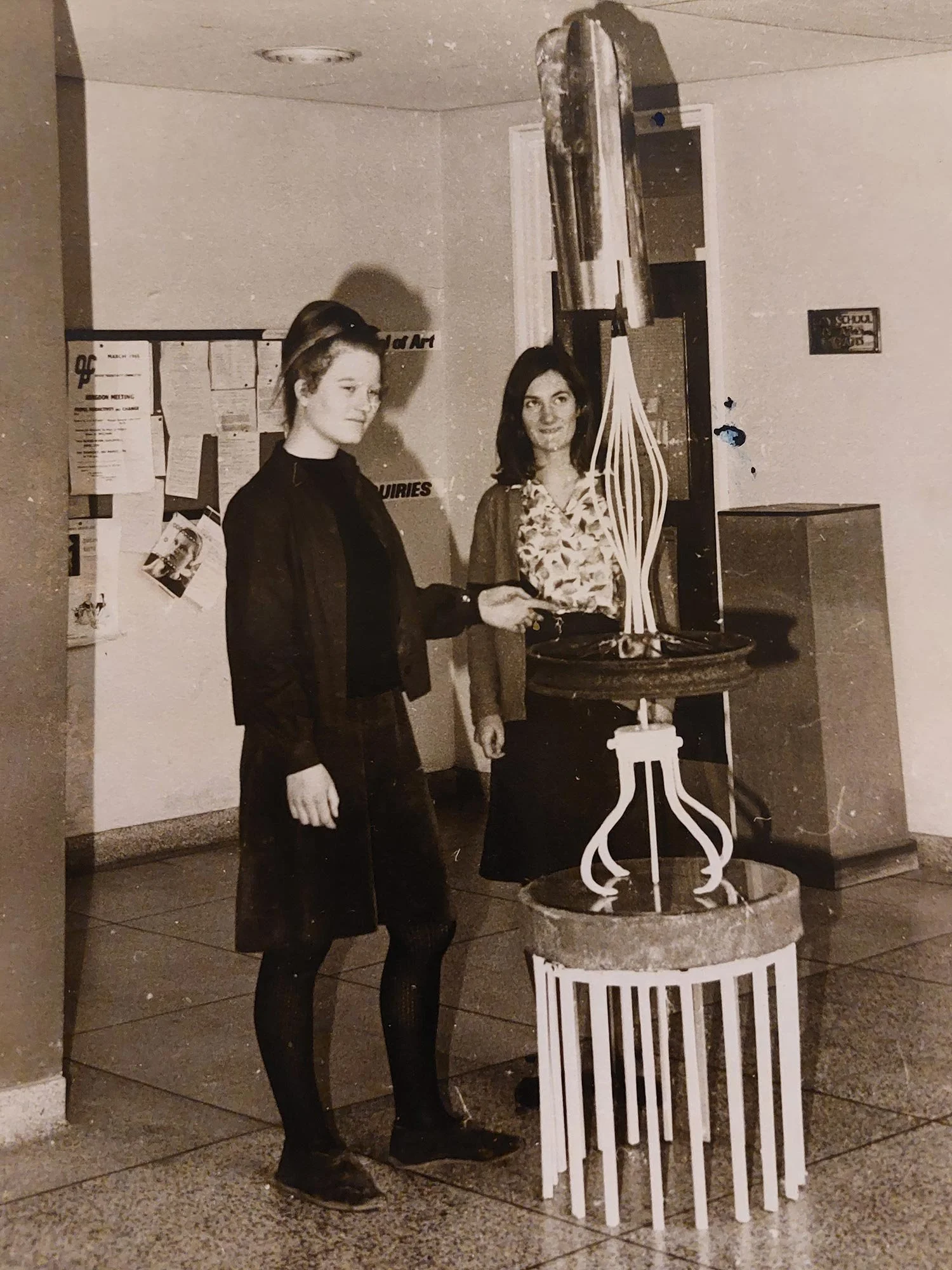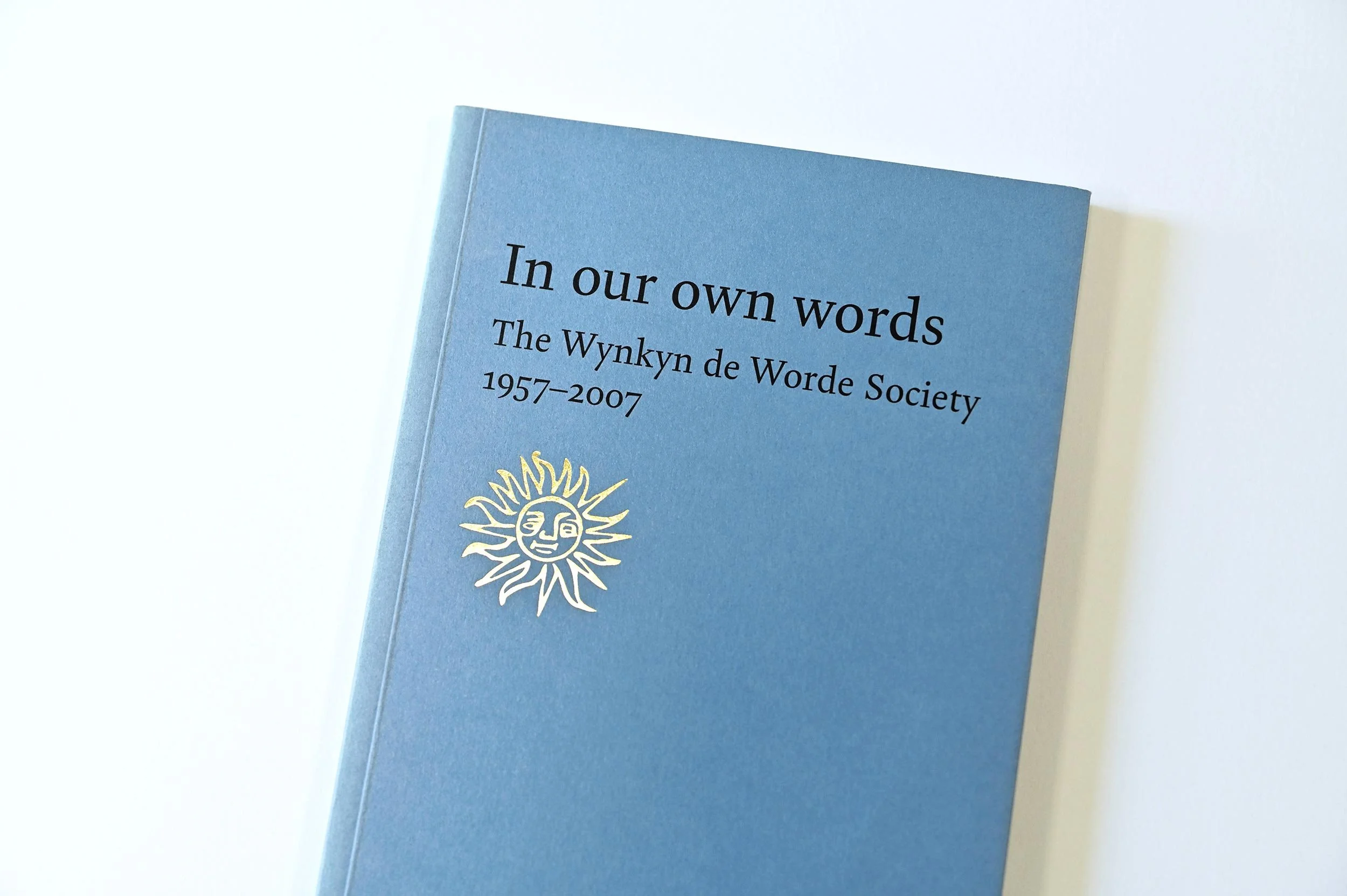In Memoriam – Bridget Wilkins
It is with sadness I share the news that Bridget Wilkins, pioneer in the study of design history and longstanding member of the Society has died.
Bridget was born on 9 April 1943, the only daughter of Ann and Jim Nicholls. Her father’s diary notes, ‘baby born and the celandines are out’, a connection between Bridget and plants that stayed with her throughout her life. Gardens feature strongly in the memoirs that Bridget wrote during lockdown, with her skill for horticulture offering both a practical means to grow food when income was low and a creative focus. Bridget also had a talent for drawing, with flowers from her garden a frequent subject.
Bridget’s early artistic ambitions led her to Oxford Technical College in 1962 where she first studied architecture, before switching to the foundation course for art school that she had wanted to do all along. Her time studying architecture had though instilled a strong design ethic, and a recognition that work is not produced in a vacuum but in relation to a client and a brief. While on the foundation course she was introduced to art history, which strengthened her interest still more in the context in which work is produced. So much so, she decided to turn down the prestigious places she had been offered to study sculpture and furniture design, and in 1964 she started the brand-new degree course in Art History at the University of East Anglia (UEA) at Norwich.
Her experience there of studying medieval art, rather uncharted territory and so less well documented, equipped her with the confidence to look at and engage with primary sources on her own terms and to work things out for herself. Though her favourite classes were those in twentieth century architecture as taught by Reyner Banham, since they included social issues and vernacular design, alongside the more obvious design ‘heroes’ such as Le Corbusier. She graduated clear in her ambition to teach art history to practitioners in HE and from 1967–68 studied for a PGCE at the Institute of Education, London University.
Arts education was a contentious field at the time and not long after qualifying she found her way to Hornsey College of Art, the centre of Britain’s art school uprising in 1968. As she recalls in her memoirs, ‘Students wanted a say in their education and design students in particular didn’t want be taught academic art history but more relevant design history of which there was very little documented.’
She started to assemble the materials needed to teach this new subject of design history. Combining the analytical skills from her study of art history with a concern for the social context in which design operates she helped students to question how and why pieces of graphic design were made and for whom. Key to her approach was the integration of this more theoretical investigation with visual practice. She would spend time with students in the studio, talking to each student individually about their written work alongside the graphic projects they were working on. In so doing, she helped them to connect these two typically distinct elements of study, while also helping students to bring greater depth of enquiry and relevance to their practical work.
The influence of her ideas on approaches to teaching soon reached beyond the remit of her own classes, and she became more involved in work at a national level in defining design history as a new discipline as opposed to, and separate from, art history. She helped found the Design History Research Group, a precursor to the Design History Society which still thrives. Through the DHRG she was invited to consult and write for the new Open University course, A305, on Design History which first presented in 1975. Her husband Steve had been a modern languages teacher (French and German) and he helped translate materials on German design, and together they visited relevant sites in Germany and took photographs for use in the Unit. She then spent four years developing the first MA course in Design History at Middlesex University which was finally approved in 1980, just as she found out she was pregnant with daughter Kat. A double success. (Bridget was a Type 1 diabetic and pregnancy was far from straightforward). She was invited in 1983 to join the new CNAA (Council for National Academic Awards) ‘History of Art and Design’ board, with oversight for the integrated provision of history and academic studies within graphic design education. She visited courses all over the country to help them re-imagine their approaches to teaching and learning.
Her openness to thinking in new ways extended to technology. While at Middlesex she borrowed the department’s new Macintosh computer at the weekends using it to document the impact of this new tool on design practices. As she started to write more on graphics, her awareness of the context of her words and the way that communications might be received by their audiences offered further opportunities for formal experimentation. In 1990 Design studio 8vo commissioned Bridget to contribute to the seventh issue of their typographic journal Octavo.
Click to enlarge | Photograph of spread © György Körössy
As editors Hamish Muir and Mark Holt reflect,
‘Her article ‘Type and Image’ stressed the importance of an inherent interrelationship between the two elements otherwise type becomes mere decoration for the visually numb – type AS image. Believing, collectively, that nobody read Octavo, Bridget’s text was presented in a challenging and stimulating layout, to encourage reading – the text spliced up and the reader guided from one section to the next by page coordinates. Throughout, it was clear Bridget revelled in the collaborative journey and discourse as much as the end result. As editors we chose to reproduce her text a second time, at the back of the journal, in its original continuous form, a decision she saw as ill-conceived and something she never quite forgave us for.’
Communication for Bridget was essential. She railed against graphic design as decoration and argued vehemently in 1992 in a seminal article for an early issue of Eye magazine that we needed, ‘No more heroes’ and that the design of everyday communications such as the London Underground map was just as important as the output of lauded individuals. It is a line of argument still current.
Spread from Eye no.6 vol.2, Spring 1992 © Eye magazine
We met not long after she wrote it, when she became a supervisor for my PhD at Central Saint Martins. There were very few people who could supervise practical research in design, and I consider myself very fortunate to have worked with one of the best. We became friends and over the years collaborated on a few publications. An oral history book about a mill in Lyme Regis featured, at Bridget’s instigation, delightful photographs of younger people rather than having less flattering photos of them in later life. It is a strategy I have followed in selecting images for this obituary.
Bridget Wilkins (left) at art school, with a welded sculpture she made with Georgina Scott
Bridget also instigated an oral history of the Wynkyn de Worde Society which resulted in the publication In our own words, in celebration of the Society’s 50th anniversary. She loved the society, which she first joined in 1989, and had hoped to be well enough to attend the January 2025 lunch but it wasn’t to be. In her memory though, I recommend reaching for that small blue book and reflecting on the stories from the ‘kindred spirits’ assembled across its pages that she helped to so wonderfully capture.
Bridget Wilkins (9 April 1943–7 February 2025) is survived by her daughter Kat, son-in-law David and grandchildren Abi and James.



